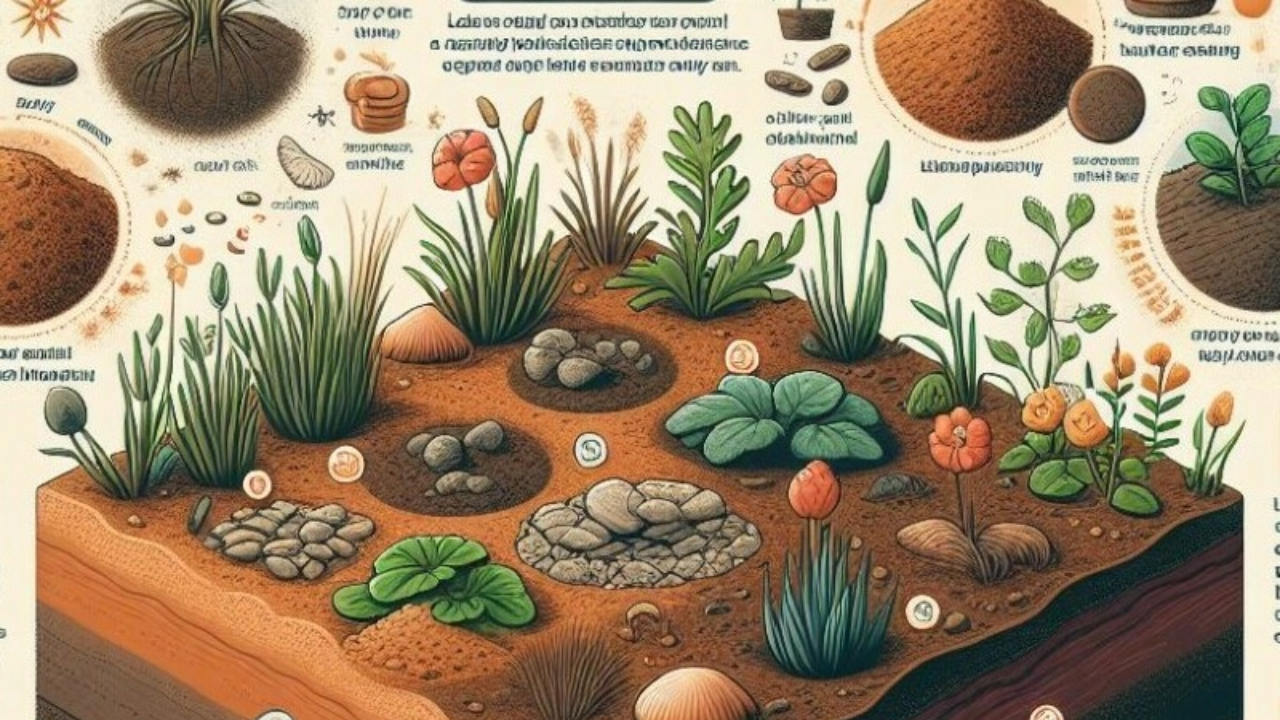
Think of soil as the foundation of your garden; it’s the starting block where your plant’s life journey begins. That’s going to include everything from tiny annuals to sprawling perennials. Soil isn’t just a pile of dirt; it’s a complex mix of minerals, organic matter, and countless microorganisms. Your plants rely on this blend for nourishment, support, and growth.
There are multiple soil types, each with traits that impact water retention, nutrient availability, and aeration. What you’ll find out about soil is that it’s not one-size-fits-all. The long-term health of your garden hinges on understanding these differences and choosing the suitable soil for your plants.
It’s not just about selecting soil labeled as ‘high-quality’ or ‘premium.’ You’re looking for the best match for your gardening needs, which means getting to know the soil. This includes its drainage capabilities, nutrient profiles, and how it interacts with your local climate.
Why does all this matter? When plants thrive, they produce more flowers, fruits, and vegetables. A gardener’s pride comes from a bountiful, beautiful garden that starts below the surface. Choosing the right soil type is like picking the right home for your plants—it sets them up for success.
The Quintessential Quartet: Exploring the 4 Major Soil Types
You’ll learn about the four major players in the gardening game. Each soil type has unique attributes, and knowing these can be a game-changer for your garden. Let’s walk through the main types individually.
First up, sandy soil. Think of this as the easy-going friend. Water drains through it quickly, so it warms up quickly in the spring. Its gritty texture makes it a breeze, especially when planting or tending to your garden. The downside? It doesn’t hold onto nutrients like other soils, so you might need to fertilize more often.
Next, we’ve got silt soil. This one’s the middle child, with fine particles smaller than sand but more significant than clay. It’s a fertile option that holds moisture well—an ideal environment for many plants. However, it can become compact and poorly aerated if not managed correctly, so keep it well-turned.
Then there’s clay soil. The dense, rich type holds onto water and nutrients like a reservoir. It is excellent for supporting plants in hot, dry periods, but it can be a bear to work with due to its heaviness and tendency to compact.
Finally, loam soil—it’s like hitting the jackpot in the lottery of gardening. A balanced mix of sand, silt, and clay, this soil has good drainage, plenty of nutrients, and moisture retention. Plus, it’s soft to the touch and full of life, music to any gardener’s ears.
These soils aren’t just types; they’re a starting point. With this knowledge, you can choose plants that suit your soil or adjust the soil to suit your plants. That’s what the next section is all about—turning any ground into your garden’s best asset.
Customizing Your Garden’s Foundation: Soil Amendments and Mixes
I will show you how to improve your garden’s performance through soil amendment. Soil amendments are materials you add to soil to improve its physical properties, such as water retention, permeability, infiltration, drainage, aeration, and structure. The goal is to provide a better environment for roots.
You can customize your garden’s soil to meet the specific needs of your plants. Whether cultivating juicy tomatoes or fragrant roses, the right soil mix can make all the difference. Adding organic material like compost or manure can improve soil fertility and structure, while inorganic materials like perlite or vermiculite can enhance aeration and drainage.
Knowing the difference between organic and inorganic options is crucial when amending your soil. Organic amendments, derived from natural sources, can improve soil structure and fertility while benefiting the microorganisms that help your garden thrive. Inorganic amendments, on the other hand, are artificial and can improve soil’s physical properties more predictably and quickly.
But remember, it’s not just about throwing in fistfuls of amendments; it’s about finding the right balance. Tailoring the mix to fit the specific requirements of your garden is vital to getting those plants to flourish. You might need to test your soil first to understand its lack and then adjust accordingly.
You’ll find out that maintaining that perfect balance is an ongoing process. Seasonal changes, plant cycles, and even the types of crops you grow will affect the soil’s needs. That’s where your attention to detail and willingness to adapt your approach down the road will truly shine.
Sustaining Your Soil: Tips for Long-Term Soil Health and Fertility
Think of your soil as a living, breathing foundation that needs ongoing care to stay vibrant. Regular soil testing isn’t just a good habit; it’s your roadmap to understanding your garden needs. Whether it’s adjusting pH levels, managing nutrient content, or checking for contamination, tests can tell you a lot.
Maintaining soil structure isn’t complicated, but it does require attention. It’s about balance – ensuring that the delicate crumb structure that allows roots to breathe and water to flow isn’t lost. I will discuss cover crops, mulching, and the right way to till.
It’s not just about what you add to the soil; it’s also about practices that preserve its quality. I’m a fan of crop rotation and organic additions like compost. These strategies boost your soil’s fertility naturally and sustainably.
Finally, integrating eco-friendly practices such as avoiding chemical overuse and embracing nature’s cycles can make a difference. You’ll find out about no-till gardening, the benefits of attracting beneficial insects, and using natural fertilizers.
Remember, your first attempt doesn’t need to be your last. Soil is forgiving. If something’s off, adjustments can usually be made without starting over. Choose methods that resonate with you, and keep learning. Your garden and the environment will thank you for it.

